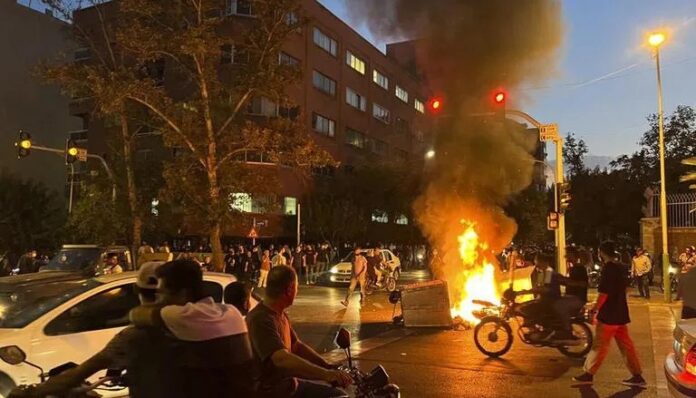| Translate This News In |
|---|
In the midst of ongoing protests over the murder of a 22-year-old woman held by the morality police, Iran’s crackdown on Kurdish territories in the country’s west reportedly got worse on Tuesday. Amnesty International and the White House national security adviser denounced the use of force against protesters incensed by the death of Mahsa Amini, who were targeted by riot police in Sanandaj, the capital of Iran’s Kurdistan province.
On Monday, a few oil employees took part in the demonstrations at two significant refinery complexes, forging the first connection between the discontent and a sector crucial to Iran’s theocracy. Iranian authorities maintain that Amini was not abused, but according to her relatives, her body had bruises and other evidence of being beaten. In later footage, security personnel can be seen assaulting and abusing female demonstrators, including those who had removed their hijabs, or obligatory headscarves.
Videos from Tehran, the country’s capital, and other locations have appeared online despite internet disruptions by the authorities. Videos from Monday showed college and high school students protesting and screaming, as well as some women and girls walking through the streets bareheaded as the demonstrations enter their fourth week. Since the protests associated with the 2009 Green Movement, the demonstrations pose one of the strongest challenges to Iran’s theocracy.
A Kurdish organisation named the Hengaw Organization for Human Rights posted a video online that appeared to show shooting and darkened streets in Sanandaj, around 250 miles (400 km) west of Tehran. Another depicted riot cops moving in formation while firing at what seemed to be houses while wielding shotguns.
The Center for Human Rights in Iran, based in New York, published another video showing what it described as a phalanx of security officers travelling through Sanandaj on motorcycles. In the Baharan neighbourhood, “they apparently damaged the windows of hundreds of cars,” the centre claimed. As a Kurd, Amini’s death was felt acutely in the Kurdish region of Iran, where protests started on September 17 at her funeral after she passed away the previous day.
The Iranian security forces were accused by Amnesty International for “using weapons and shooting tear gas indiscriminately, including into people’s houses.” As Tehran keeps up its disruption of internet and mobile phone networks “to cover their crimes,” it implores the world to put pressure on Iran to stop the crackdown. The intensified crackdown in Sanandaj was not immediately acknowledged by Iran. The British ambassador was called by the Iranian Foreign Ministry because the United Kingdom had sanctioned security and morality police personnel as a result of the crackdown.
Even as it threatened to possibly take action against London, the Iranian Foreign Ministry labelled the sanctions “arbitrary and unfounded.” The world is monitoring what is occurring in Iran, according to Jake Sullivan, national security adviser to U.S. President Joe Biden. Sullivan stated on Twitter that the demonstrators were Iranian citizens who were “demanding dignity and basic rights, spearheaded by women and girls.” “We stand with them, and we will hold accountable those who use violence in an ineffective attempt to silence their voices,” the statement continued.


















